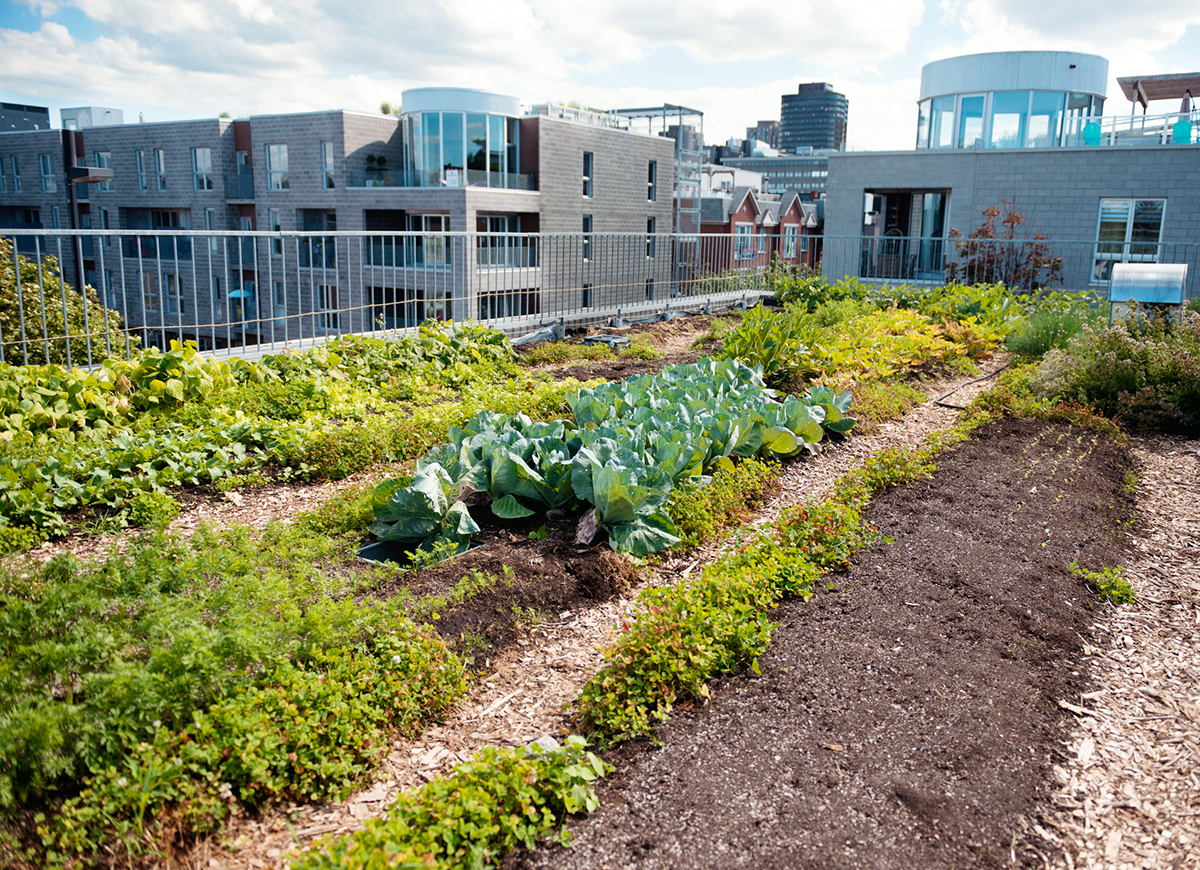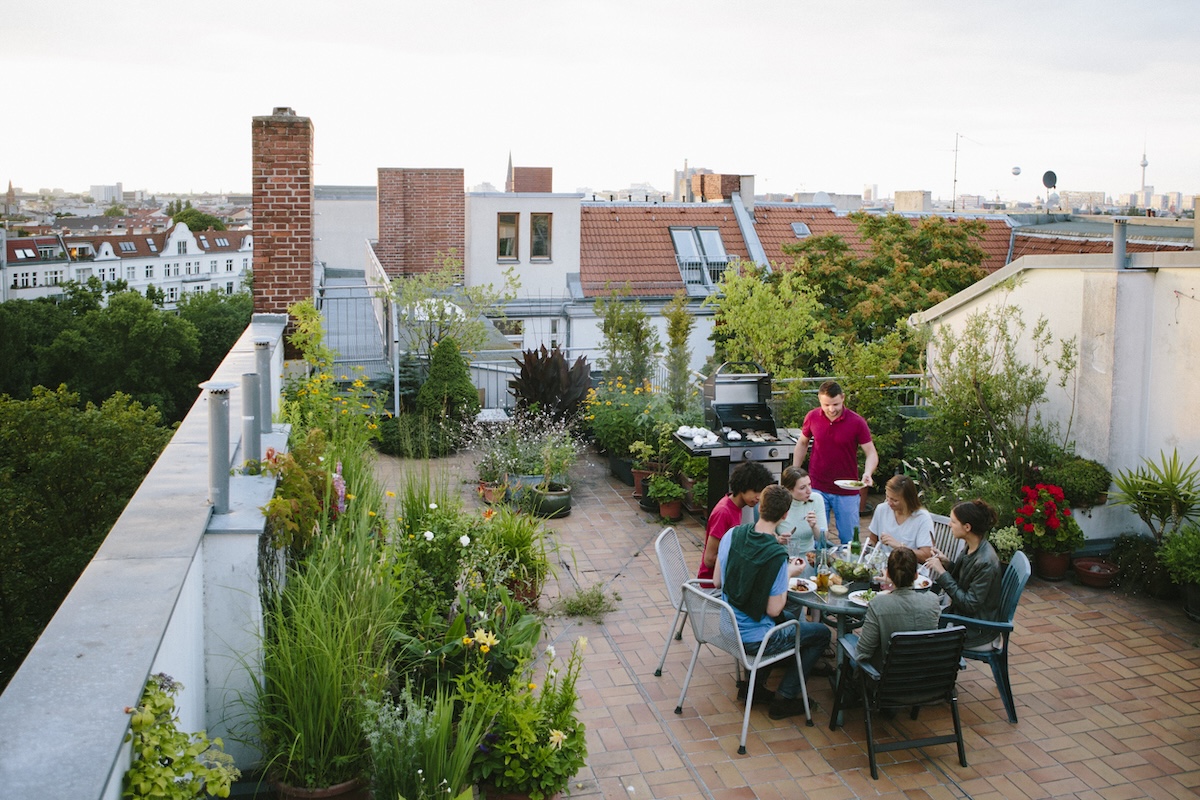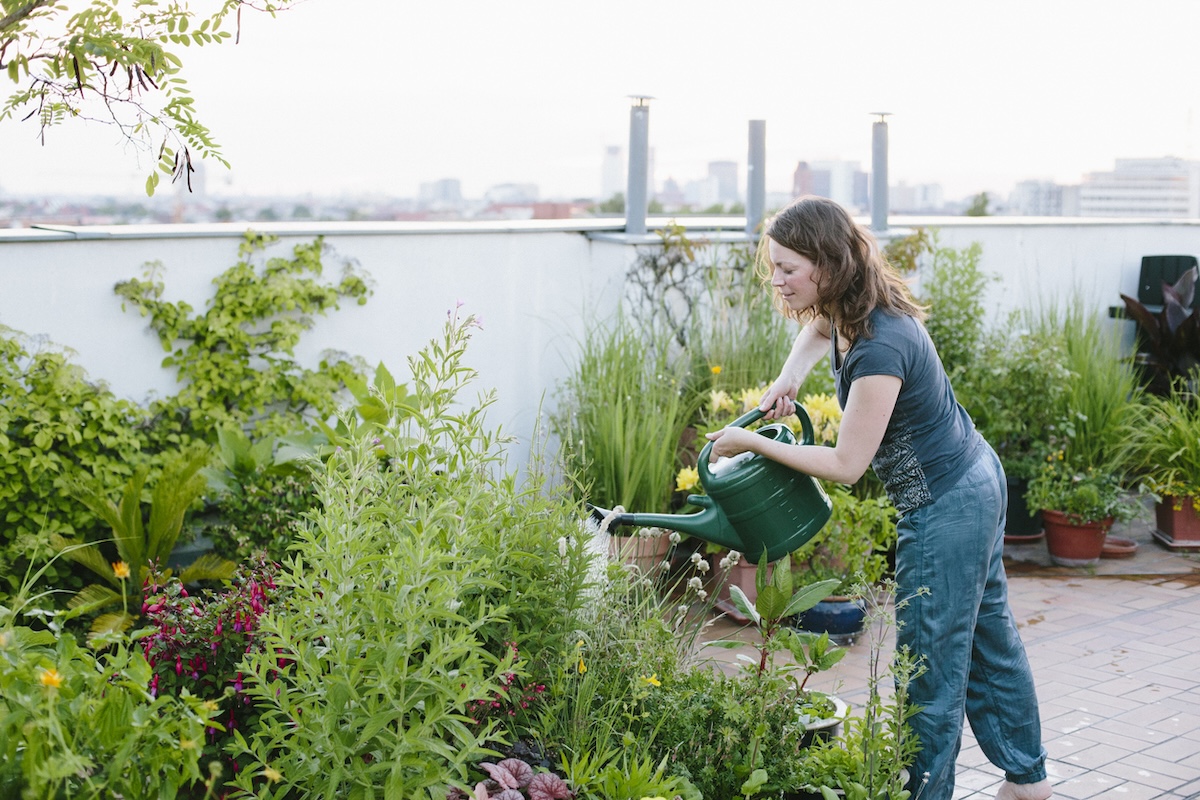We may earn revenue from the products available on this page and participate in affiliate programs. Learn More ›
Rooftop gardens have some or all the elements of a typical garden on the ground, including water features, plants, wildlife habitat, and places to relax or entertain. Some people may choose to add other features like walkways, outdoor kitchens, privacy structures, and lighting like festive string lights to set the mood. The key is to plant any vegetation over a waterproofing system.
Rooftop gardens have become popular in recent years as more people realize the beauty, extra space, and environmental benefits they provide, especially for those living in urban areas. Plus, the trends of spending more time at home and growing your own food have bumped up interest in roof gardens.
Pros and Cons of Rooftop Gardening
There are numerous advantages of rooftop gardening. “Rooftop gardens are an eco-friendly solution to mitigate the effects of climate change and increase energy efficiency of a building,” says Katie Burdett, rooftop farmer and gardener in the Midwest and owner of Growing With Gertie. “They are fantastic for absorbing rainwater, keeping a building cool, improving air quality and even providing noise insulation.”
Rooftop gardens also attract wildlife, helping to enhance biodiversity and contribute to a healthier ecosystem. Finally, spending time in urban rooftop gardens can help improve both mental and physical well-being, according to a study from the Centers for Disease Control and Prevention.
On the other hand, green roofs can have some drawbacks to consider when thinking about installing one. “Building a rooftop garden can be difficult (think carrying bags of soil upstairs),” says Burdett. She adds that sometimes the roofs are neglected due to windy conditions on the rooftop. There can also be structural concerns with these spaces, given the additional weight of plants, soil, and water on the roof. Plus, there is a risk of water leaking, which can potentially damage the building and contribute to water runoff problems.

Important Considerations When Planning a Rooftop Garden
When designing and planning a rooftop garden, it’s important to take the right steps to ensure it is successful. From consulting with an engineer to choosing the right growing method, the following factors come into play when planning a green roof.
Consult with a structural engineer.
“Not all buildings are meant to withstand the weight of a rooftop garden (think heavy, wet soil), so consult with a licensed architectural engineer before installing a rooftop garden,” recommends Burdett. Taking this step could prevent a serious and costly disaster later.
Check the slope of the roof.
Rooftop gardens are best installed on a flat roof to prevent issues with the plants and rainwater runoff. Sloped roofs will need a reinforcing system before building the garden.
Make sure the roof is easily accessible.
The garden should be set up in a way that it is easy to bring tools, soil, plants, and other materials to and from the roof. It is also important to make sure people can reach the garden without any challenges. If stairs are involved, make sure they are safe and simple to maneuver.
Use sturdy materials.
Since wind can be an issue, choose sturdy materials, such as large pots and half-barrel planters. If growing in raised beds, use ones that are at least 10 inches deep to ensure adequate soil for root growth.
Set up a water source.
Having an adequate and easily accessible water supply is a must on a rooftop garden so the vegetation can receive water when needed. Be sure to build the water source into the design to avoid having to carry water up to the roof.
Ensure adequate storage space.
Set up a convenient place to store materials like soil, gardening tools, and fertilizer to avoid having to lug them up to the roof. This could be as simple as a sturdy wooden or plastic box placed in the corner.
Choose the best growing method.
Before setting up the garden, decide how the plants will grow most effectively. Containers, pots, vertical systems, large planters, and raised beds are all valid options.
Design for your enjoyment as well.
Don’t forget to design the space for relaxing and entertaining as well. Set up some cozy loungers, a table and chairs for dining, mood lighting, and privacy features to make the most of the space.

The Best Plants for Rooftop Gardens
Rooftop gardening comes with some challenges to keep in mind. “Rooftops can be harsh growing environments with lots of wind and heat,” notes Burdett. “Choose plants that are low-growing, heat tolerant, and have a shallow root system.” Fortunately, a large array of plants can grow in only 4 to 10 inches of soil and in pots for small-space gardening on a roof.
Here are some rooftop garden ideas for plants that consider factors like heat, sunlight, wind, watering needs, and space.
- Herbs: Herbs can help improve air quality, reduce stormwater runoff, and provide habitat for pollinators on green roofs. Opt for drought-resistant herbs like lavender, rosemary, and thyme and those with shallow root systems like chives and parsley. Basil and oregano can help attract pollinators.
- Succulents: Cacti and other succulent plants can thrive in rooftop conditions since they are low-maintenance, shallow-rooted, and drought-resistant.
- Dwarf fruit trees: Able to grow in containers in compact spaces, dwarf fruit trees provide both fresh fruit to eat and are aesthetically pleasing, given their blossoms.
- Edibles: For those who want to grow their own produce, edibles are a wonderful choice. Greens, beets, onions, peppers, squash, tomatoes, and cucumbers would all do well on the roof and garden.
- Sedums/stonecrops: A popular green roof option, sedums are hardy and drought-tolerant succulents requiring minimal maintenance; they grow low and can spread. It is visually appealing and comes in a variety of colors and shapes.
- Regional natives: It’s a good idea to choose some native flowering plants to attract pollinators and other wildlife.
Maintaining a Rooftop Garden
Before installing a garden rooftop, consider the maintenance required to keep it safe and flourishing. It is critical to keep up with maintenance to prevent serious issues like deterioration of the garden and roof structure. Typical maintenance entails irrigation, fertilization, weed and pest control, pruning, and replanting when necessary. Expect to tackle many of these tasks every week, while others may only need quarterly or annual attention. For example, Burdett recommends setting up a drip watering system to keep the garden sufficiently watered.


